Peach-Mango Custard Pie
As an Amazon Associate and member of other affiliate programs, I earn from qualifying purchases.
I wanted to make a Peach-Mango Custard Pie so I searched for recipe inspirations. I found out my friend, cookbook author Nancie McDermott admitted she is a peach devotee in her new cookbook “Fruit” as I searched for peach recipes. She described she “is enchanted by their beautiful shape, color and texture.” Like Nancie’s description of her early acquaintance with peaches, I never had the fresh fruit till I moved to America over 25 years ago. I grew up in the Philippines where our familiarity with peaches was limited to the canned ones in sweet, heavy syrup.
Ever since I tasted my first fresh peach in America, it has become one of the summer fruits I look forward to every year. Last year in early June, we were on vacation in Japan and on a tour of beautiful Mount Fuji, I chanced upon Japanese fresh peaches sold by a roadside vendor. They were enormous, light orange-colored and utterly sweet. I was delighted to know peaches grew in Asia, too.
Mangoes are another fruit I enjoy from spring to late summer and they are my absolute favorite. Mangoes are the national fruit of the Philippines and I’ve enjoyed them since I was a baby. My father grew mango fruit trees at our backyard and farm in the Philippines. I can’t remember a summer that I didn’t relish mangoes.
So, I was at the Asian market last week and I was sad to see the end of the mango season. There were a few fruits being sold, but obviously they were the last of the batch – looking forlorn, shriveled and over ripe. But I often try to be optimistic and find opportunities for sad-looking fruits. I bought the mangoes and was thinking of making jam out of the batch.
If you get your hands on any of Nancie McDermott’s cookbooks, you’ll notice her recipes are versatile, user-friendly and adaptable to almost any part of America one lives. Perhaps even globally. And this is why it was easy to bake this custard pie from Nancie’s recipe.
Peaches and mangoes combined make for a wonderful, fruity flavor with a gentle, syrupy aroma which appeals to the Filipino palate. I have mentioned before there is a popular Filipino fast food chain that sells peach-mango hand pies and the lines to the counter are forever long. Instead of standing in line, I made the decision to go home and make my own peach-mango pie for my family – a recipe I shared on my cookbook “How to Cook Philippine Desserts, Cakes and Snacks”.
When I came upon Nancie’s peach custard pie recipe, an idea sparked in my mind. Why not combine both peach and mangoes again and bake it in a silky, custard filling encased in a flaky crust? It sounded superb. And it was. When the pie came out of the oven, the golden custard glistened and the peach slices temptingly protruded from underneath. The mango cubes were embedded deep within the custard but a few forkfuls revealed them soft and nearly jam-like underneath. What a luscious summer pie this turned out to be. This was a wonderful way to bid “the last gasp of summer” goodbye.
Peach-Mango Custard Pie
Ingredients
- 1 single pie-crust for a 9-inch pie recipe in previous blog post - pastry for a single pie crust (or use store-bought)
- 2 cups sliced fresh peaches peeled, pitted, sliced (from about 5 fruits)
- 1/4 cup granulated sugar
- 1 Tablespoon calamansi or lemon juice
- 1/2 teaspoon salt
- 1 1/2 cups cubed fresh ripe mangoes from about 2 fruits, use ataulfo variety
- 1 piece (4 oz.) palm sugar discs (panocha) or use 1/2 cup brown sugar
- 2 teaspoons calamansi or lemon juice
- 3 whole eggs
- 1 can (12 fl. oz) evaporated milk or 1 1/4 cups
- 1 teaspoon organic pure vanilla extract
Instructions
- Preheat oven to 350 F.
- Make the pie crust from a previous blog post recipe (or use store-bought crust). Click here for the recipe.
- Roll out the chilled pie crust on a flat, dry, floured surface of the counter. Measure to fit the bottom of a 9-inch pie plate. Place over the pie plate. Trim any overhanging crust and flute the edges with your thumb for a decorative look. Set aside.
- Prepare the peach filling: in a medium-sized stockpot combine the peaches, sugar, calamansi (or lemon) and salt. Cover and bring to a boil. Then lower heat to a simmer and cook for 15 minutes till it gets to be a thick, jam-like consistency. Stir every few minutes so fruit does not stick to the bottom. Set aside in a bowl to cool.
- Prepare the mango filling: in the same medium-sized stockpot, combine the mango cubes, panocha disc (or brown sugar) and calamansi juice. Cover and bring to a boil. Lower heat to a simmer. Stir every few minutes. Cook for 15 minutes till it gets thick and has a jam-like consistency. Set aside to cool.
- In a medium-sized bowl, combine the custard filling: eggs, milk and vanilla. Set aside.
- Arrange both the peaches and mangoes in the pie crust. Pour the custard over the fruits. Place the pie plate on a large tray to catch any drippings while baking.
- Bake the pie at 350 F for one hour and 15 minutes or till custard is firm. Test if done by pricking the middle of the custard with the tip of a small knife. When knife comes clean, the pie is ready.
- Cool the pie on the counter. Cover and chill for a few hours or overnight to firm up before serving.
- Cook's Comments: Panocha (also spelled 'panotsa' in Pilipino) are raw sugar cane molded in a disc that resembles a coconut shell. It is reddish brown sugar made from molasses which comes from sugar cane. Panocha discs are sold at Asian markets or online sources. Calamansi is the Filipino lime, which are small, round and colored dark lime green if they come from the Philippines; the calamansi grown in America are golden-yellow or orange-colored. Calamansi has a sweet, citrusy flavor and aroma and is used in many Filipino dishes. If calamansi are not available, substitute with fresh lemon juice.
- Hello, Friends! All the images and content on this blog are COPYRIGHT PROTECTED and owned by my media company Besa-Quirino LLC. This means BY LAW you are NOT allowed to copy, scrape, lift, frame, plagiarize or use my photos and recipe content I wrote, on your website,books, films, television shows or videos without my permission. If you want to republish this recipe or content on another website, video, news article,or media outlets mentioned above please ASK my permission, re-write it in your own words and simply link back to this blog to give proper attribution. It’s the legal thing to do. Thank you. Email me at [email protected]
- Disclosure: As a participant in the Amazon Affiliate program, some blog posts contain links to products used in the recipe and sold on Amazon. The price stays the same for the readers who wish to purchase these products on my links. I earn a small commission from Amazon which helps maintain the blog expenses. Thanks in advance for your support.
Nutrition
Notes on Nutrition: The nutrition information provided is an estimate and will vary based on cooking methods and specific brands of ingredients used.

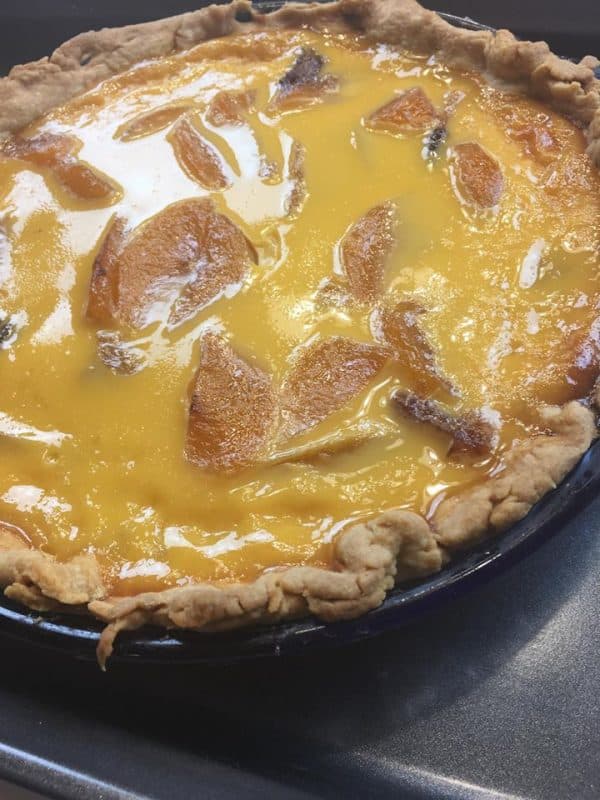
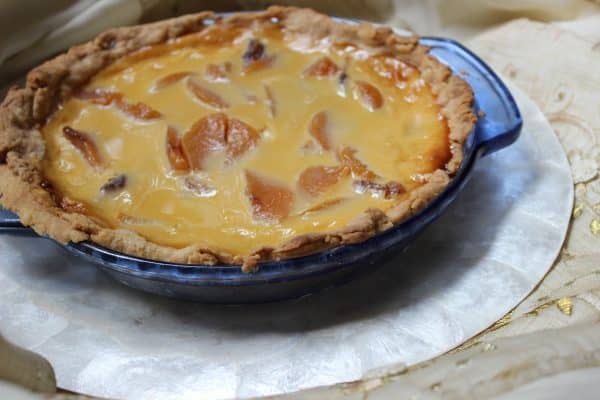
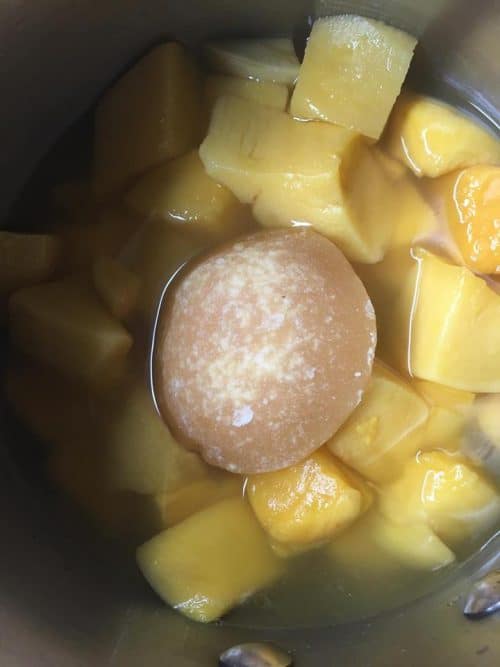
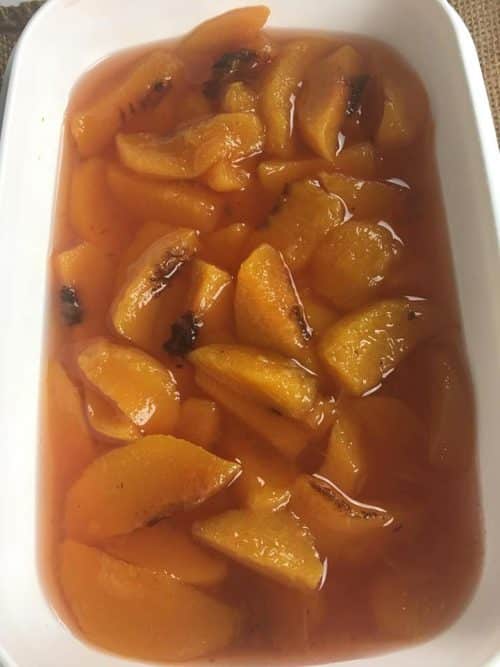
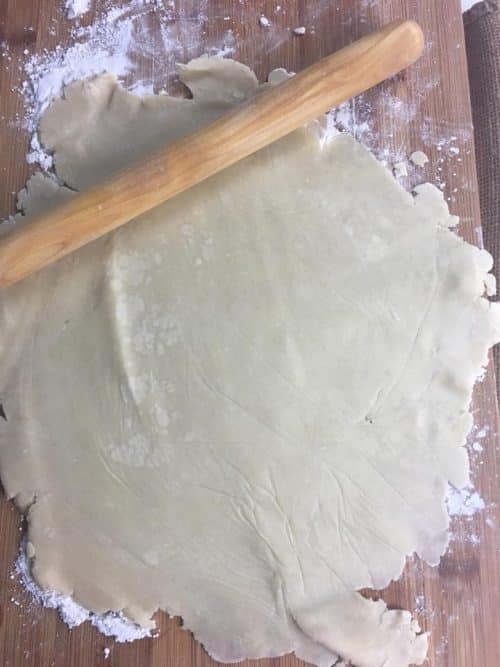
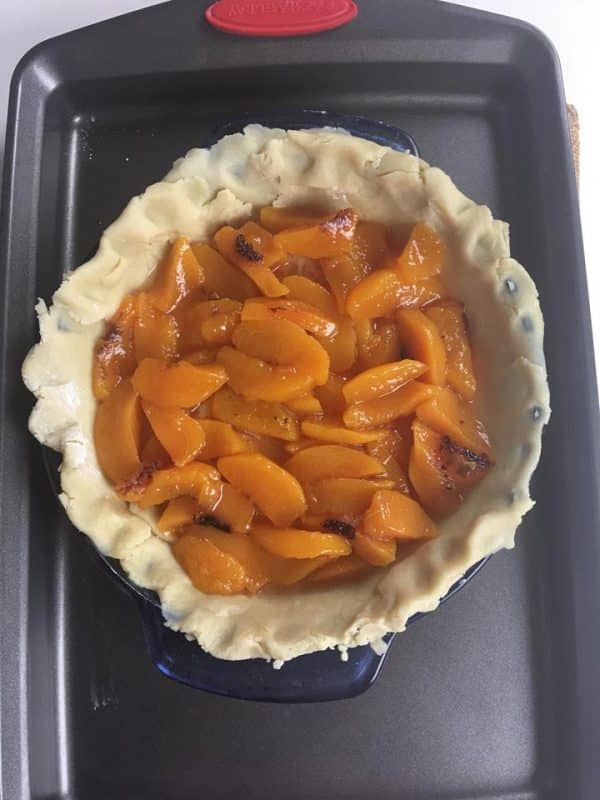
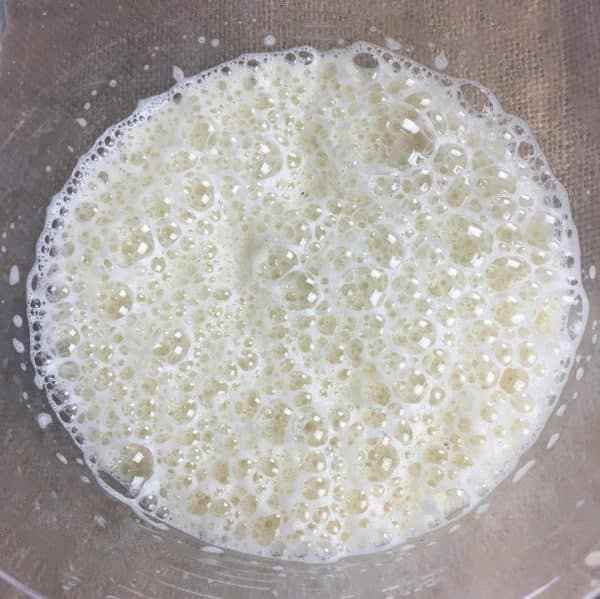
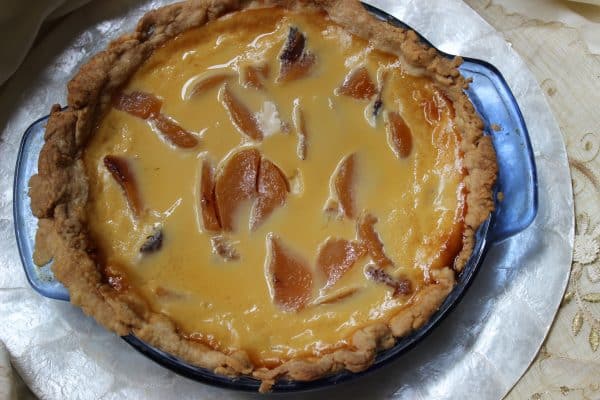
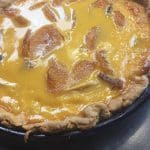
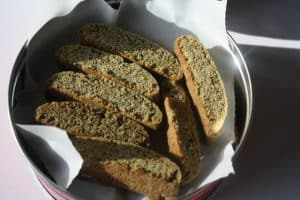
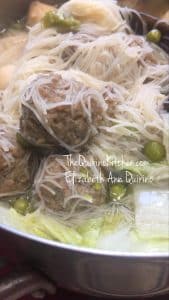
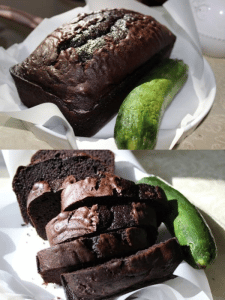
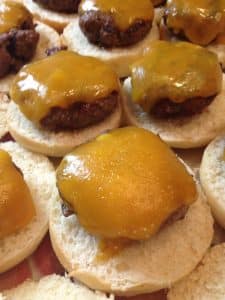
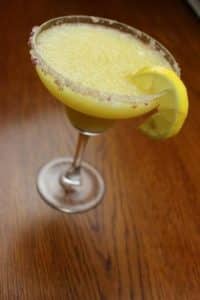
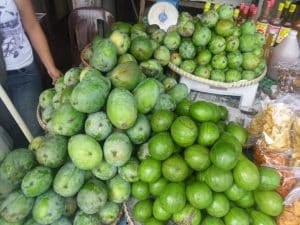
This peach mango custard pie looks delicious! I haven’t seen palm sugar discs before, they look interesting!
Thanks, Shareba. I found the palm sugar discs (panocha) at the Asian food store. These were made in Thailand. You might find some via online sources. But if not, you can substitute 1/2 cup brown sugar or palm sugar for each disc.
This is a nice recipe, thank you for sharing.
Thanks, Chase!